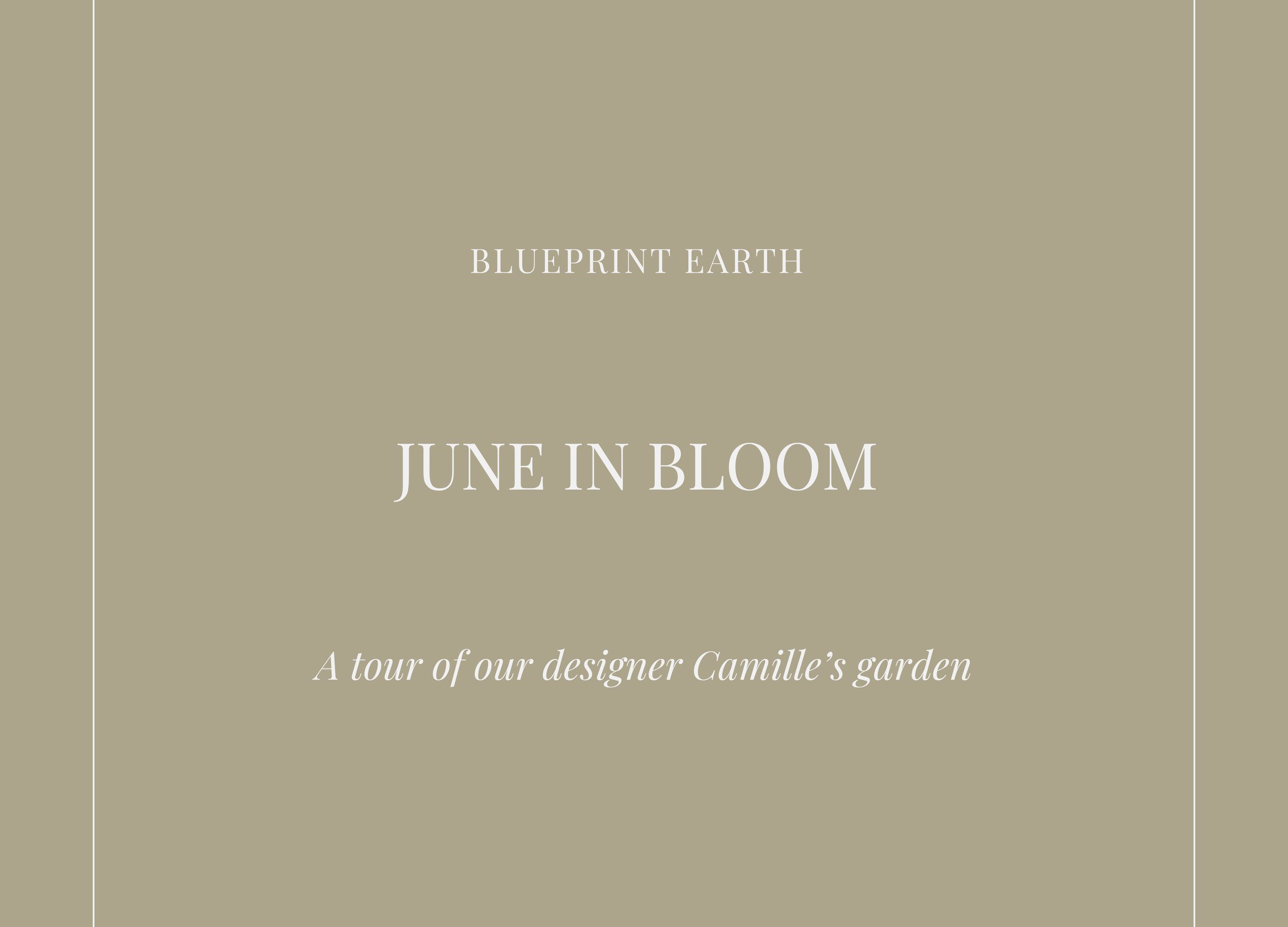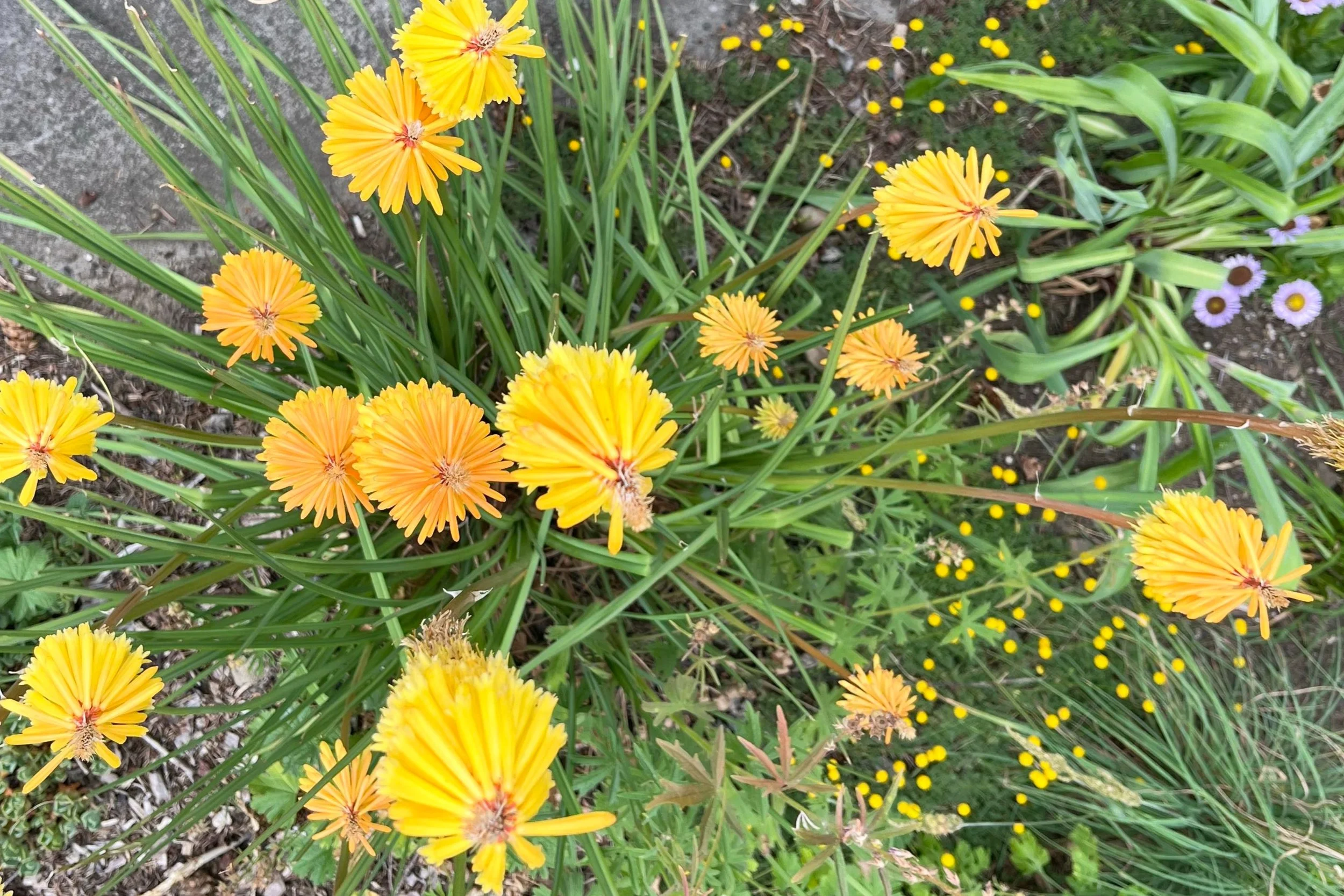June in Bloom
Plants for designing a resilient Portland garden
Have you ever wondered what goes into designing a resilient Portland garden that not only survives but thrives—even in tricky spots with mixed sun and shade? You’re not alone! Finding the right drought-tolerant plants and plant combinations for Pacific Northwest gardens can take years of experimenting, but with patience and the right choices, it’s totally achievable.
In this post, Camille, one of our landscape designers, shares her personal journey creating a low-maintenance, blooming front yard garden in Portland’s shifting light conditions. You’ll learn about choosing tough native plants like Erigeron glaucus, unique selections like Ozothamnus ‘Sussex Silver,’ and how layering textures and colors can bring harmony and life to challenging sites.
We’ll also dive into practical sustainable landscaping tips for working with sun and shade, attracting pollinator-friendly plants, and building a garden that evolves with you—plus why a little trial and error is part of the process. Whether you’re a beginner or looking to refine your landscape design, Camille’s insights will inspire your next steps.
The Challenge: Shade and Afternoon Sun
My front garden is a really tricky spot. It gets shade most of the day, then gets blasted with sun during those late afternoon hours. Full sun plants don’t do super well, but neither do full shade. After seven years of trial and error, here’s what’s thriving (and blooming!) in my garden.
Soft, Cheerful Groundcovers
Erigeron glaucus (Seaside Daisy) + Erigeron glaucus ‘White Lights’
This native coastal daisy brings a soft, cheerful energy to the garden. One variety has lavender petals and the other has white, but they both attract a constant flurry of bees and hoverflies. I love how it nestles easily between rocks or cascades over low walls, softening edges with its fluffy green foliage. It’s also impressively resilient, happy with sandy soils and tolerant of dry spells. A great ground cover.
Garden Insight: Plant this where you want color and life without high maintenance. It thrives with minimal water and offers months of bloom if deadheaded regularly.
Cotula ‘Tiffendel Gold’
Ground-hugging and endlessly charming, Cotula ‘Tiffendel Gold’ is spreading like a carpet of golden buttons across my sunny borders. Drag your hand across the top to make them dance. The finely textured foliage almost disappears beneath the bright button-like blooms, creating a light green mat similar to yarrow. It’s especially good trailing over gravel paths.
Garden Insight: This will spread. Easy to pull out in areas you don’t want it, but you’ll need to pay attention.
Architectural, Evergreen Stars
Ozothamnus ‘Sussex Silver’
Though this plant is more known for its shimmering foliage than its blooms, its clusters of tiny white flowers offer subtle charm. The silver leaves reflect light beautifully and make a brilliant contrast to deeper greens or dark-leaved companions. This plant is not for the uniformed gardener. Its shape is abstract and funky.
Garden Insight: I think of this as my garden's quiet star, architectural, evergreen, and extremely drought tolerant. A great background player that elevates neighboring colors.
Brachyglottis greyi (Daisy Bush)
I mostly planted this shrub for its silver foliage, but right now its clusters of bright yellow daisy-like flowers are very cute and not overpowering. It’s both structural and sunny, one of those rare shrubs that looks fantastic year-round.
Garden Insight: A powerhouse for coastal or dry gardens. Prune lightly after flowering to keep it compact and bushy.
Helichrysum thianshanicum (Silver Spike)
Though its flowers are still just beginning to open, it’s the foliage that steals the show here. It’s so light and silvery it’s almost ghostlike. I will say, this plant seems to be the only one that is not loving its current location. It’s leaning over to one side, clearly wanting more sun than I’ve given it.
Garden Insight: Use this to add softness and reflectivity to your planting palette. It contrasts beautifully with bold flowers like kniphofia or digitalis.
Bold Blooms and Pollinator Favorites
Kniphofia ‘Shining Scepter’
This torch lily variety sends up blazing spikes of orange-gold blooms that catch the eye instantly. Put these babies somewhere they’ll catch the golden hour sun and you’ll stop dead in your tracks. Hummingbirds are especially fond of this one, and I can often spot them darting in and out of the fiery flowers.
Garden Insight: I’m really impressed with how well it blooms in the more shady areas of my garden. It doesn’t seem to need much sun at all. Xera Plants nursery in SE Portland currently has a variety called ‘Toffee Nose’ that is another favorite of mine, and good for anyone that wants a little less neon in their life.
Achillea millefolium (Yarrow)
Achillea is a workhorse in my garden, reliably blooming and providing texture with its finely cut foliage. The creamy white umbels are open now, and they pair beautifully with ornamental grasses and other sun lovers. It’s a native to this area and pollinators adore it. Yarrow has great medicinal properties as well. Try rubbing the leaves on cuts and wounds to promote quick healing.
Garden Insight: It’s one of those plants that bridges wild and cultivated spaces. Cut it back after flowering for a second flush later in the season.
Digitalis parviflora (Chocolate Foxglove)
Not your typical foxglove, this is definitely my weirdo of the garden. With rusty, chocolate-toned flowers they are a subtle but striking addition. They also mimic the shape of the kniphofia in a way that I enjoy. I love how the brown color interacts with the oranges and purples.
Garden Insight: It’s not flashy, but it adds sophistication. Perfect for gardeners who love a more muted, naturalistic palette. They reseed on their own and are super low maintenance.
color palette
The color palette in my front garden feels both playful and grounded. The blooms drift from soft whites and light purples to cheerful yellows, rusty browns, and vibrant oranges that catch the light. It’s a mix that feels warm but still a little wild. The foliage is just as important, layering silver and gray against grassy and dark greens. Altogether, it creates a garden that’s calm yet lively, full of subtle shifts that keep things interesting through the seasons.
Final Thoughts
This part of my garden has only recently brought me joy. It’s been through many iterations, experiments, and failures. I finally feel like I have a tough combo of beautiful survivors. The progression of blooms is harmonious and the foliage heights, colors, and textures are varied yet consistent. Most importantly, I feel happy when I look out the window. The constant presence of bees and hummingbirds helps too.
Need Help Designing and Building Your Dream Garden?
If you’re ready to create a garden but want an expert team to handle the details, Blueprint Earth is here to help. We specialize in evaluating landscapes, planning for stormwater and grading, and designing sustainable gardens that thrive in the Pacific Northwest.
Let us bring your vision to life—contact Blueprint Earth today to get started!










